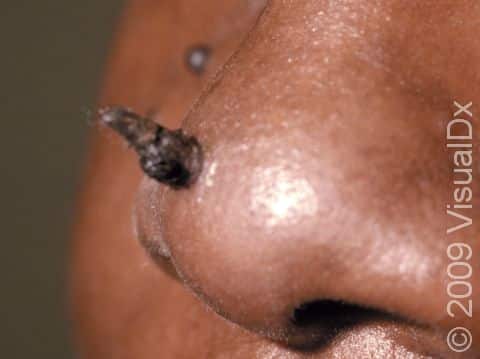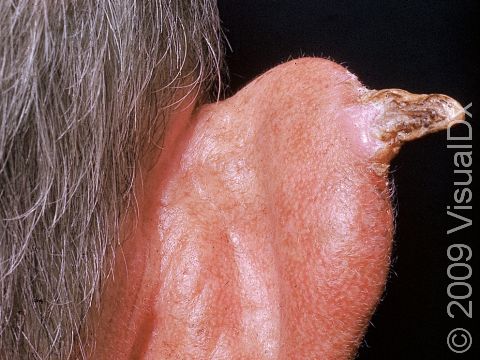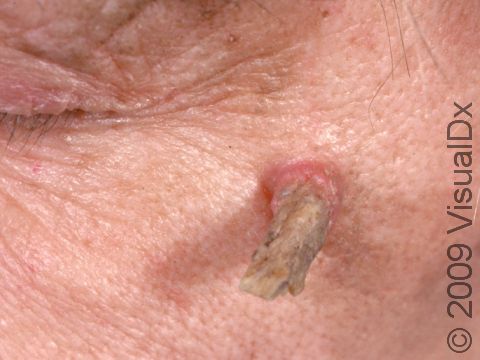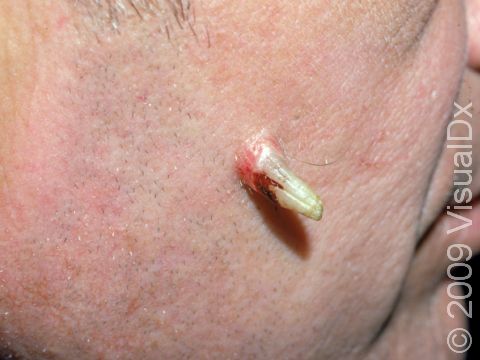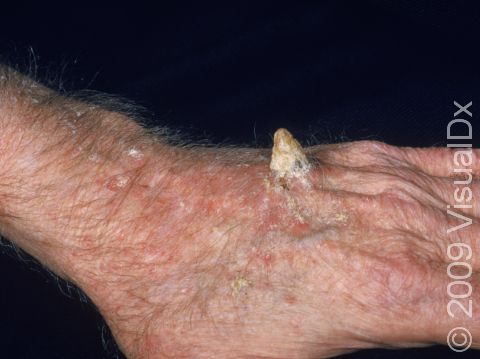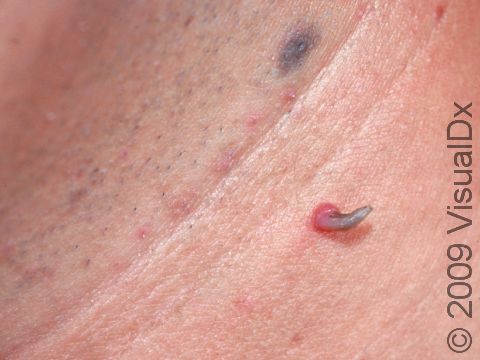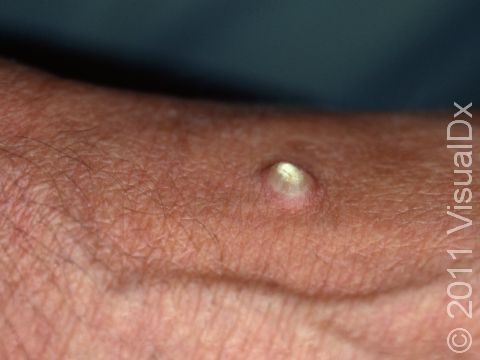Cutaneous Horn
A cutaneous horn, also known as cornu cutaneum, refers to a specific appearance of a skin lesion in which a cone-shaped protuberance arises on the skin caused by overgrowth of the most superficial layer of skin (epidermis). A cutaneous horn is not a particular lesion but is a reaction pattern of the skin. Approximately 40% of cutaneous horns represent precancerous lesions called actinic keratoses. Cutaneous horns may also overlie skin cancer. When overlying cancerous skin, squamous cell carcinoma is typically at the base of the cutaneous horn, but basal cell carcinoma is also possible.
Who's At Risk?
Cutaneous horns most often occur in adults, usually elderly, light-skinned individuals with a history of significant sun exposure.
Signs & Symptoms
A cutaneous horn most often occurs on sun-exposed areas and appears as a cone-shaped protuberance arising from a skin-colored to red/pink bump or flat lesion.
Self-Care Guidelines
None necessary.
Treatments
If the lesion is benign, no further treatment may be needed.
If the lesion is precancerous, the physician may:
- Freeze the lesion with liquid nitrogen.
- Use a topical chemotherapy agent, such as 5-Fluorouracil or a topical medicine that stimulates the immune system, imiquimod.
- Scrape and burn (curettage and electrodesiccation) the lesion.
If the lesion is cancerous, the physician may:
- Perform surgery.
- Use a topical chemotherapy agent, such as 5-Fluorouracil or a topical medicine that stimulates the immune system, imiquimod.
- Scrape and burn (curettage and electrodesiccation) the lesion.
- Recommend radiation therapy.
Visit Urgency
Seek medical evaluation if a cutaneous horn is noted. A biopsy may be needed to assess whether the lesion is benign, precancerous, or cancerous.
Trusted Links
References
Bolognia, Jean L., ed. Dermatology, pp.1715. New York: Mosby, 2003.
Freedberg, Irwin M., ed. Fitzpatrick’s Dermatology in General Medicine. 6th ed, pp.721-723, 740. New York: McGraw-Hill, 2003.
Last modified on February 10th, 2023 at 6:56 pm

Not sure what to look for?
Try our new Rash and Skin Condition Finder
